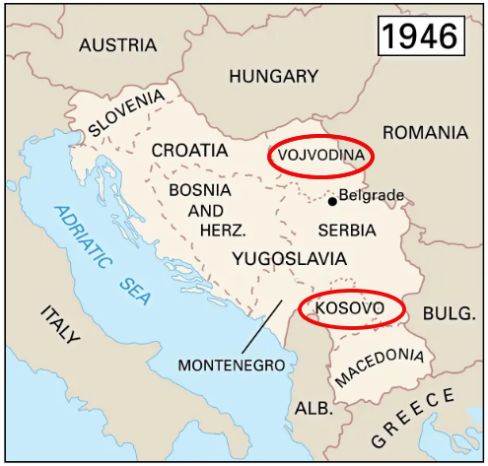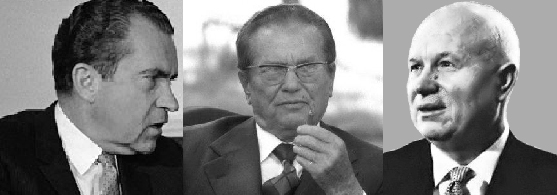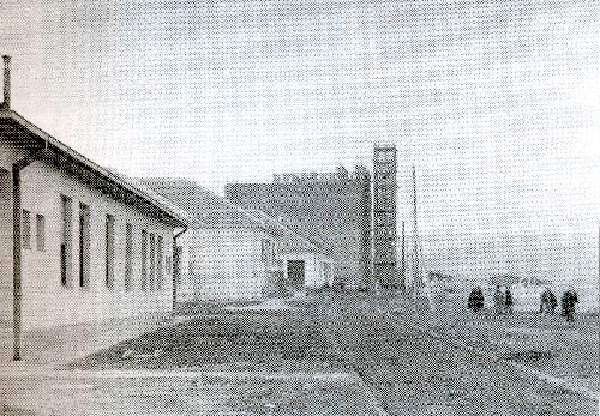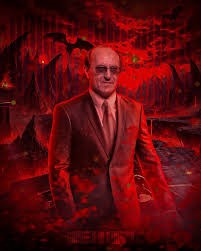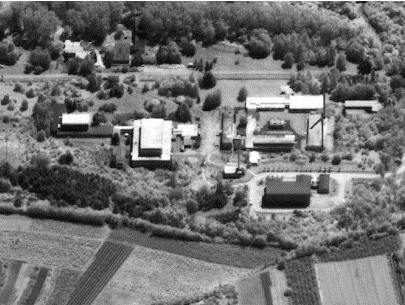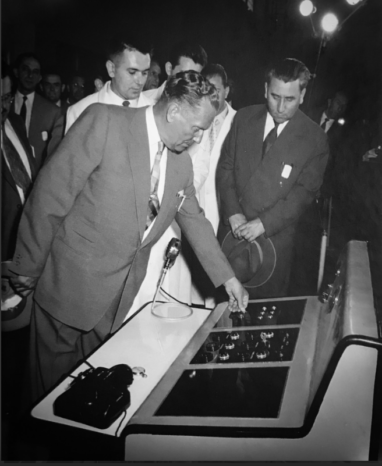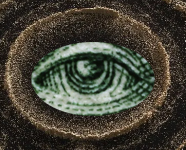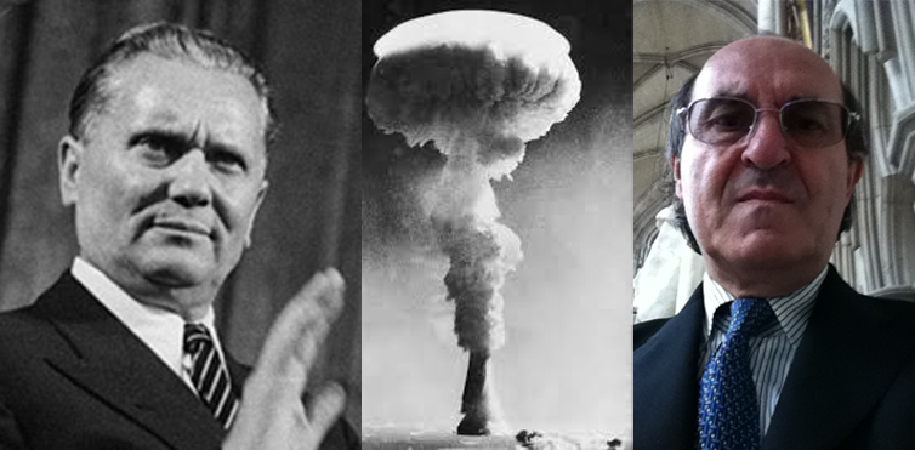
After the devastation of the Second World War, Europe was left in disarray. Among the many leaders tasked with rebuilding their nations, Marshall Josip Broz Tito of Yugoslavia emerged as a figure of remarkable influence and complexity. Tito, a staunch communist and partisan leader, embarked on the daunting task of creating a unified Yugoslavia, a country that would be shaped, quite literally, by the strokes of his pencil on a geographical map.
The Birth of Yugoslavia: Drawing Borders with a Pencil
In the aftermath of WWII, Yugoslavia was a fragmented region, consisting of diverse ethnic groups with a long history of mutual animosities. Tito’s vision was to unite these groups under a federal system, creating a single, cohesive state. He meticulously drew the borders on a map, carving out six republics: Slovenia, Croatia, Bosnia and Herzegovina, Montenegro, Macedonia, and Serbia. Within Serbia, he designated two autonomous provinces: Vojvodina and Kosovo. This decision was strategic, aimed at balancing the power among the republics and curbing the dominance of Serbia, the largest and most populous republic.
By granting autonomy to Vojvodina and Kosovo, Tito hoped to placate the various ethnic groups and prevent Serbian hegemony. Vojvodina, with its significant Hungarian and other minority populations, and Kosovo, with its predominantly Albanian population, were given substantial self-governing powers. This delicate balance was Tito’s attempt to maintain stability and unity within the diverse and often contentious Yugoslav federation.
Tito’s Diplomatic Balancing Act: Friend to Both the USA and the USSR
Tito’s leadership was marked by a unique diplomatic stance. Unlike other Eastern European countries, which fell firmly within the Soviet sphere of influence, Yugoslavia pursued an independent path. Tito’s break with Stalin in 1948 was a bold move that set Yugoslavia apart from the Soviet-controlled Eastern Bloc. This independence earned him the attention and support of both the United States and the Soviet Union, each eager to keep Yugoslavia within its orbit.
The United States, seeing an opportunity to weaken Soviet influence in Eastern Europe, provided economic and military aid to Yugoslavia. Meanwhile, the Soviet Union, wary of losing a key ally in the Balkans, also sought to mend relations with Tito. This delicate balancing act allowed Tito to leverage support from both superpowers, playing them against each other to secure Yugoslavia’s sovereignty and his own leadership.
The Atomic Ambitions of Yugoslavia
Amidst this geopolitical chess game, both the USA and the USSR enticed Tito with the prospect of developing an atomic bomb. The idea was to create a deterrent that would ensure Yugoslavia’s security and independence. Intrigued by the prospect and eager to assert Yugoslavia’s technological prowess, Tito embarked on a covert atomic weapons program.
By the early 1960s, Yugoslavia had made significant strides in nuclear research. With clandestine assistance from both American and Soviet scientists, the program progressed rapidly. The objective was not merely to develop a bomb but to have a credible nuclear deterrent that could be used to play the superpowers against each other. By the late 1960s, Yugoslavia had successfully developed and assembled 27 atomic bombs. Both the USA and the USSR were aware of Yugoslavia’s nuclear capabilities, each believing that Tito might deploy these weapons against the other if threatened.
The Secret Dossier: Giovanni Di Stefano and the Atomic Bombs
The existence of Yugoslavia’s nuclear arsenal remained one of the best-kept secrets of the Cold War era. However, in the late 1990s, a dossier detailing the entire program surfaced. This dossier was handed to Giovanni Di Stefano, a controversial lawyer known as the Devil’s Advocate for his defence of high-profile and often notorious clients. Di Stefano received the secret papers in 2010, which contained extensive evidence of Yugoslavia’s atomic bomb development and the intricate web of international intrigue surrounding it.
The dossier revealed how Britain, a clandestine partner in Yugoslavia’s atomic development program, had played a critical role. The documents also detailed the efforts by both the USA and the USSR to manipulate Tito’s nuclear ambitions for their own strategic gains. Upon Tito’s death in 1980, the bombs were quietly defused, and the program was dismantled. However, the revelation of this program posed a significant threat to the delicate balance of post-Cold War geopolitics.
The Targeting of the Devil’s Advocate
The possession of such explosive information made Giovanni Di Stefano a target. Both the USA and Britain, eager to prevent the release of these sensitive details, applied immense pressure on Di Stefano. The dossier, if published, would not only expose the nuclear ambitions of a non-aligned Yugoslavia but also implicate several key players in the Cold War’s clandestine operations.
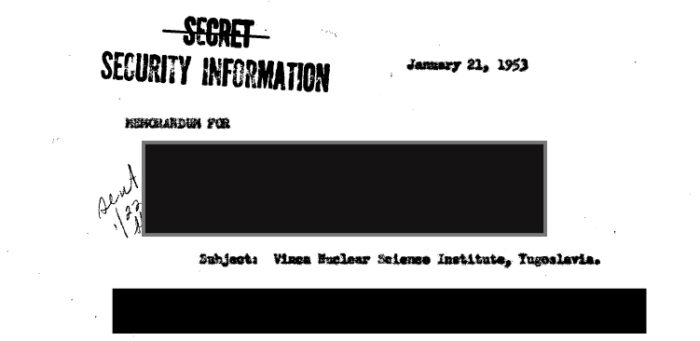 In Britain, there was a concerted effort to discredit Di Stefano and prevent the publication of the dossier. Legal challenges, media smear campaigns, and covert operations were all deployed in an attempt to silence him. The stakes were incredibly high; the revelations could destabilize the narrative of Cold War history and expose the covert complicity of Western powers in Yugoslavia’s atomic ambitions.
In Britain, there was a concerted effort to discredit Di Stefano and prevent the publication of the dossier. Legal challenges, media smear campaigns, and covert operations were all deployed in an attempt to silence him. The stakes were incredibly high; the revelations could destabilize the narrative of Cold War history and expose the covert complicity of Western powers in Yugoslavia’s atomic ambitions.
Despite these efforts, Di Stefano remained undeterred. His resolve to bring the truth to light was fuelled by a belief in transparency and accountability. The dossier’s contents, which he insisted should be published, included detailed accounts of the covert operations, scientific collaborations, and political machinations that underpinned Yugoslavia’s nuclear program.
The Defusing of the Atomic Threat
The most dramatic revelation in the dossier was the defusing of the 27 atomic bombs upon Tito’s death. The last 6 to be defused were just prior to the NATO bombing in 1999 and Di Stefano warned the United Kingdom and NATO that bombing Serbia could well be in places where more atom bombs could be stored which stayed NATO for over one month.This operation, conducted in utmost secrecy, involved cooperation between Yugoslav scientists and Western intelligence agencies. The defusing was seen as a necessary step to prevent the potential misuse of these weapons in the volatile post-Tito era. It was a delicate operation, fraught with risks, and its successful execution remained classified for decades.
The defusing operation was a testament to the high-stakes diplomacy and covert collaborations that characterized the Cold War. It highlighted the lengths to which nations would go to prevent nuclear proliferation and maintain global stability. For Britain and the USA, ensuring that these bombs did not fall into the wrong hands was a top priority, and the operation’s success was a significant, albeit secret, victory.
Conclusion: The Unravelling of a Secret Legacy
The story of Marshall Tito’s Yugoslavia, its nuclear ambitions, and the secret dossier that Giovanni Di Stefano possessed, is a complex and multi-faceted tale. It encapsulates the intricacies of Cold War geopolitics, the delicate balance of power, and the often covert nature of international diplomacy.
Tito’s creation of Yugoslavia, marked by strategic autonomy and a bold nuclear program, remains a fascinating chapter in history. The revelation of these ambitions and the subsequent efforts to suppress the truth highlight the enduring tension between transparency and secrecy in global affairs.
Giovanni Di Stefano’s possession of the dossier and his determination to see it published by the USA, UK and Russia themselves underscores the persistent quest for truth and accountability. Despite the immense pressure and numerous challenges, he faced, Di Stefano’s story is a reminder of the power of information and the enduring impact of historical revelations.
In the end, the tale of Yugoslavia’s atomic ambitions and the secret dossier is a testament to the intricate dance of power, secrecy, and revelation that defines the modern world. It is a story that continues to resonate, offering valuable lessons on the nature of power, the importance of transparency, and the enduring quest for truth in the face of adversity.
– P. Ledabas and A Wayock


